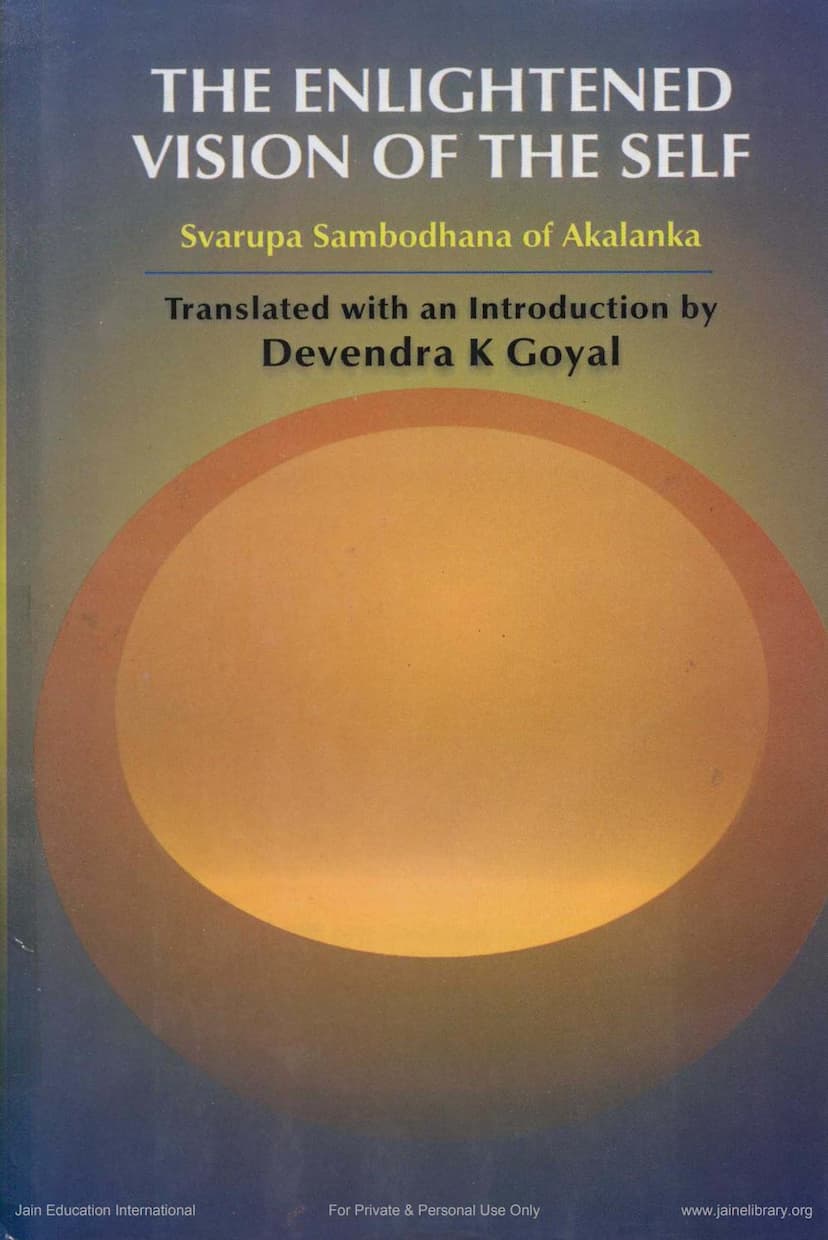Enlightened Vision Of The Self
Added to library: September 1, 2025

Summary
"The Enlightened Vision of the Self," translated by Devendra K. Goyal and based on the "Svarupa Sambodhana" of the 8th-century Jain philosopher Akalankadev, delves into the intrinsic nature of the self and the path to its realization. Akalankadev, a renowned logician and defender of Jainism against Buddhist philosophical attacks, presents a concise yet profound exploration of the soul's true essence.
The book examines the fundamental question of "Who Am I?" by contrasting Jainism's perspective with those of Buddhism, materialism, Samkhya, and Vedanta. It addresses key inquiries about consciousness and the soul: its existence, substance versus function, changelessness versus evolution, and immanence versus transcendence. The text also critically analyzes concepts like "Being and Becoming," the identity of self with Brahman ("aham brahmasmi," "tat tvam asi"), and the self as a knower or observer.
Key themes explored in the book include:
- The Nature of the Self: The book describes the self as pure consciousness, free from karmic bondage, and possessing infinite knowledge, vision, power, and bliss. It emphasizes that the soul is not absolutely identical or different from knowledge but exists in a relationship of identity-in-difference.
- Anekantavada (Non-absolutism): Akalankadev's approach is rooted in the Jain principle of anekantavada, acknowledging the multifaceted nature of reality. This allows for seemingly contradictory attributes to coexist when viewed from different perspectives, refuting one-sided philosophical claims.
- Critique of Other Philosophies: The text engages in critical analysis of various philosophical schools, including Buddhism (refuting momentariness and denial of a permanent self), materialism (Charvaka), Samkhya (criticizing the passive nature of Purusha), Vedanta (especially Advaita), and Mimamsa.
- The Path to Self-Realization: The book outlines the Jain path to liberation, which involves the combined practice of Samyak Darshan (right vision/intuition), Samyak Jnana (right knowledge), and Samyak Charitra (right conduct). It emphasizes the importance of detachment from desires, including the desire for liberation itself, and the cultivation of equanimity, compassion, and self-reliance.
- Continuity and Change (Dravya and Paryaya): Appendix 1 elaborates on the Jain concept of dravya (substance) as possessing continuity and change, being characterized by origination, destruction, and permanence. This dual aspect is crucial for understanding the dynamic yet stable nature of reality.
- Samyakdarshan (Enlightened Vision): Appendix 2 details the prerequisites and characteristics of Samyakdarshan, highlighting the importance of equanimity, enthusiasm for righteousness, renunciation, compassion, and firm conviction. It asserts that this enlightened vision is the foundation for spiritual progress and liberation.
- The Psalm of the Soul (Atma Kirtan): Appendix 3 presents a hymn by Manoharlal Varni, addressing the soul directly. It emphasizes self-reliance, the inherent divinity of the soul, and the path to liberation through the eradication of passions and the realization of one's true, blissful nature.
"The Enlightened Vision of the Self" serves as a valuable resource for scholars and students of Indian philosophy, particularly Jainism, offering profound insights into the Jain understanding of the self and the spiritual journey towards its ultimate realization.